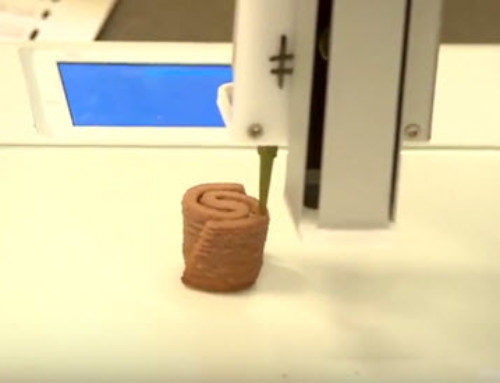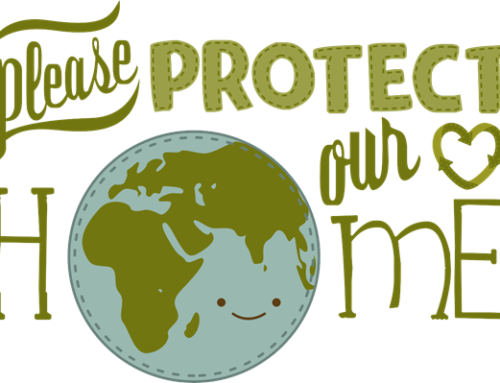PVC and Environment: How This Plastic Pollutes the Air, Water and Soil
 Let’s talk about one of the most commonly used plastics today – Polyvinyl chloride. Or, as we all know it – PVC. In fact, 20 million tons were produced only in 1995. The reason why it is so commonly used, is because it’s a low cost material, light weight and comfortable to work with.
Let’s talk about one of the most commonly used plastics today – Polyvinyl chloride. Or, as we all know it – PVC. In fact, 20 million tons were produced only in 1995. The reason why it is so commonly used, is because it’s a low cost material, light weight and comfortable to work with.
In this article we will talk about and explain, how PVC is made, what the bad side effects from using it are and what the methods of its disposal are.
How PVC is made?

We get a flexible polymer when we add Plasticizers in the rigid one. Plasticizers are an additive, which passes on special rubber-like attributes of the polymer. (For a more elaborated version of how PVC is made, visit Manufacturing polyvinyl chloride (PVC) is a three-step process.
In the process of making PVC, other additives are used as well, such as: impact modifiers, fillers, processing aids, smoke suppressors, UV stabilizers and optionally, pigments. What the end product would be used for will decide what sort of additives will be added in the process.
Many of these additives are released into the nature when PVC’s are getting made. This delivers a bad effect on the environment, which we will talk about in the succeeding chapter.
Why PVC is bad for the Environment?
With the use of raw chemicals, the production of PVC can be harmful for the surroundings. Particularly for the environment that is close to where it is being made.
 For example, residents from Mosswile, Louisiana – a town that is close to a chemical facility for production of PVC – have had three times more than normal dioxides level in their blood. All this is caused from the pollution of the water, ground and air.
For example, residents from Mosswile, Louisiana – a town that is close to a chemical facility for production of PVC – have had three times more than normal dioxides level in their blood. All this is caused from the pollution of the water, ground and air.
The pollution, of course, comes from releasing and disposal of additives during the devising process.
In putting out these chemicals, which some are classified as carcinogenic, we risk our health. In fact, dioxin – one of the elements that occurs in the process, has been classified as a known human carcinogen. This is confirmed by the International Agency for Research on Cancer and U.S. National Toxicology Program.
Latest research indicates that there is no safe level of dioxin exposure for humans. Tests have been performed on animals, and they all showed a negative affects. Even when a PVC product is starting to break down, it’s bad. With the breaking down, all the lead, mercury, chlorine and phthalamites will go into the soil, and eventually – in the water supply.
PVC Disposal Methods
The practice of many large companies in the USA is to burn the PVC products as a means of disposal, but this is not a safe choice at all. Did you know that more than 100 waste incinerators can burn 500 -600 million pounds of PVC each year – in the USA alone. This results in many toxins being released into the air.
Dumping the PVC into the landfills, is likewise not a safe alternative – as we have previously mentioned.
Recycling of PVC is not an easy task. Actually, it is – but it’s not the answer. This is because many different materials are utilized when making PVC, the final product cannot be split again, something that is necessary for recycling. Usually the PVC products are made into less quality ones.
The summary is, there is no really secure way of PVC disposal. Because the real problem begins with its manufacturing.
PVC Alternatives
So, are they any alternatives for PVC? Well, yes, they are.
And yes, if you can, you should embark on using them instead of the PVC.
Let’s begin with what kind of PVC products you should get rid of first:
– Kid’s toys. Especially the ones that they chew, put in their mouth or use them regularly. .
Alternatives for this would be paper games or puzzles & wooden or cloth toys.
Some other products might be lunch boxes, piping and siding. Of course, if you already have these made from PVC, it’s illogical to replace them – because they are made and used in such big amounts. Only if you’re building from scratch, it’s always more beneficial to find PVC- free fabrics.
– Lunch Boxes: How to know which ones are safe?
Always try to see that they are made of. Avoid boxes that have elements like polycarbonate, polystyrene or PVC/vinyl.
Of course, when speaking of replacing PVC, then the price is a big factor. Yes, for some products the price difference is minimal, but for some it’s not. Still, you can expect better quality and more lasting use with the PVC-free merchandise.
Some other PVC alternatives are PVC-free bags made of ethylene vinyl acetate (EVA), PVC-free tubing from silicone or polyurethane and disposable gloves made from Nitrile. If you’re looking for new windows, let’s say, consider wood, fiberglass or aluminum windows. Not only they are better for the environment, but PVC windows are more sensitive to hot and cold temperatures.
Where is PVC used?
The short answer is: everywhere.

3D rendering of a PVC Molecule.
A common form of plastic.
H (Hydrogen) = Light Blue
C (Carbon) = Dark Blue
Cl (Chlorid) = Purple
We use the PVC in our everyday lives and here are some examples:
– Piping, electric wiring, kitchen supplies, clothing (coats, caps, aprons, bags – PVC is mostly applied for this, because of the fact that makes the product waterproof), mobile phones, tablets, laptops, cameras, watches, tiles, signs.
Once more, the fact that it is inexpensive to make and easy to use makes PVC more available for everyone.
Facts, about Waste and Recycling of PVC
In regards to PVC and plastic, here are some facts about recycling that you may find interesting.
– From over 7 billion pounds of PVC that is thrown away every year in the USA, only one quarter of one percent is being recycled (or, 18 million pounds)
– In 2002, Ireland started to charge 15 cents for every plastic bag. With this, the bag consumption dropped for 90 percent. This program helped them to raise millions of euros in revenue – and enabled them to get a healthier environment.
– 102.1 billion plastic bags are being used from Americans every year, creating tons of waste.
– San Francisco has found that it cost them 17 cents for them for handling each discarded bag.
– Airports and airlines recycle only 20 percent of the waste they’re creating. And they are creating is 425,000 tons of waste.
– The average American employee consumes 2.5 cans of soda each day at work.
– Alaska has 300 landfill facilities. The rest of the northeastern region has only 134.
– The United States has more communities working towards Zero Waste goals than all of Europe.
All of these facts are about how PVC, is disposed and what the effects from that are – it’s time to start thinking about better solutions. Of course, while PVC is as cheap as it is, we don’t expect that to change any time soon.
We hope that this article helped you to better understand the hazards of the product that we are using every day







Leave A Comment